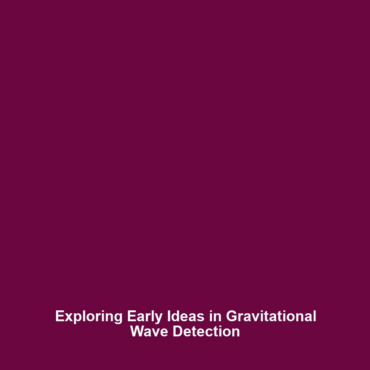Recent Black Hole Mergers Detected by LIGO and Virgo
Introduction
The detection of recent black hole mergers by the Laser Interferometer Gravitational-Wave Observatory (LIGO) and Virgo represents a groundbreaking advancement in the field of astrophysics. These discoveries not only enhance our understanding of gravitational waves but also illuminate the processes governing black hole formations and interactions. As more black hole mergers are observed, the implications for theoretical physics and cosmology become increasingly profound.
Key Concepts
Gravitational Waves
Gravitational waves are ripples in spacetime caused by the acceleration of massive objects, such as merging black holes. The detection of these waves was first achieved in 2015, leading to a new era in astronomy.
Black Hole Mergers
Black hole mergers occur when two black holes orbit each other and eventually collide. This process generates gravitational waves that can be measured by observatories like LIGO and Virgo. Detecting these events provides vital data for understanding the universe’s mysteries.
Applications and Real-World Uses
The recent black hole mergers detected by LIGO and Virgo have practical applications in several domains:
- Astrophysics: Enhancing models of black hole formation and evolution.
- Cosmology: Assisting in measuring the expansion rate of the universe.
- Technology Development: Fostering innovations in sensors and data analysis techniques.
These applications showcase how the detection of black hole mergers is used in the broader topic of gravitational waves.
Current Challenges
Despite the advancements made, several challenges persist in studying recent black hole mergers:
- Data Overload: The vast amounts of data generated can be difficult to analyze efficiently.
- Noise Interference: Environmental factors can obscure gravitational wave signals.
- Theoretical Limitations: Current models may not fully explain all observed phenomena.
Addressing these challenges is essential for future discoveries in the field of gravitational waves.
Future Research and Innovations
Research initiatives focusing on recent black hole mergers are aimed at several innovative breakthroughs:
- Advanced Detectors: The development of next-generation gravitational wave detectors, such as the Einstein Telescope.
- Machine Learning: Utilizing artificial intelligence to sift through vast datasets more effectively.
- Interferometry Innovations: Enhancing sensitivity and accuracy in detecting gravitational waves.
These advancements promise to deepen our understanding of gravitational waves and the universe beyond.
Conclusion
In conclusion, the recent black hole mergers detected by LIGO and Virgo signify a notable achievement in understanding gravitational waves and the mechanisms of the universe. As research progresses, the insights gained from these phenomena will undoubtedly shape the future of astrophysics.
For further reading on gravitational waves and their implications, visit our articles on the history of gravitational wave detection and the impact of black holes on cosmology.






